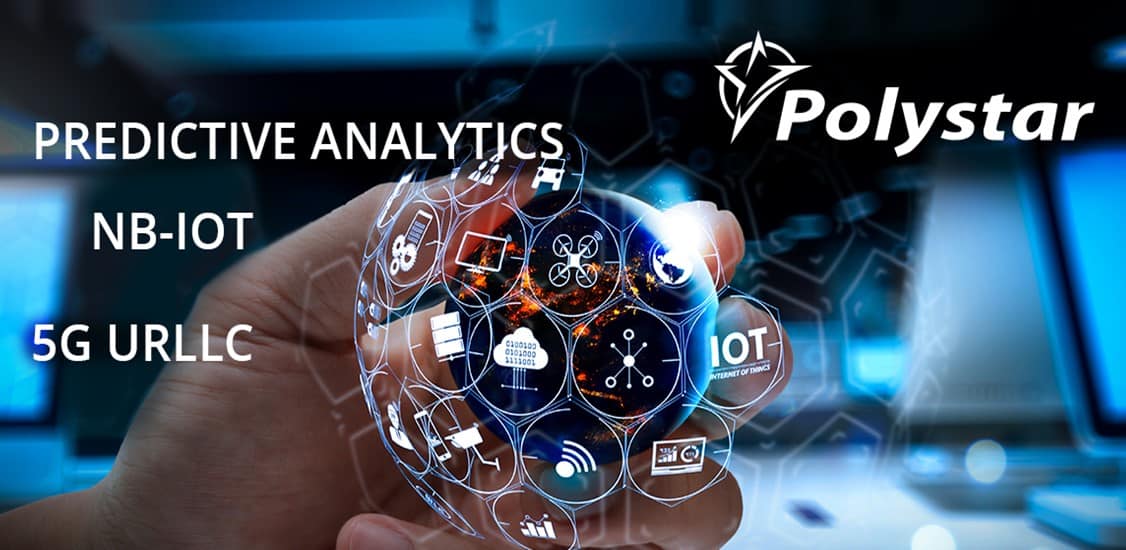As we move into 2019, it’s very tempting to jump onto the 5G bandwagon and align all forecasts with this. But, while 5G is sure to capture many of the headlines in the coming months, there’s a lot more happening in the mobile industry. Yes, we will see early-stage 5G deployments - as well as inevitable controversies, as analysts query whether news of a deployment actually represents 5G speeds - but there are other interesting developments which will have a significant positive impact on the mobile economy.
For example, IoT is becoming ubiquitous. Slowly but surely, we have edged into the world of massive IoT with a host of industrial applications now being served by cellular IoT solutions. As a result, providers have raced to offer managed connectivity solutions and NB-IoT has taken off. Early headlines had been captured by players delivering services over non-licensed spectrum access, but the traditional mobile community has rapidly been catching up. What’s next in store?
Similarly, new analytics capabilities are going mainstream, unlocking new sources of insights and changing the way in which business make decisions. What’s happening and how can the mobile ecosystem help shape the next wave?
So, with that in mind, let’s turn to Polystar’s predictions for 2019 - read on to find out what our experts think.
#1: NB-IoT is set to explode!
According to industry analysts, Hadden Telecom, 68 operators in 48 countries had launched NB-IoT services by the end of October 2018. Not only does this indicate it gathering momentum, it’s also a clear sign that the market is set to explode. There are a couple of reasons for this. First, some markets already have more than one operator live, so that’s going to lead to competition and is a clear sign that there is confirmed end-user demand. Second, in markets where there is, to date, only a single player, we can anticipate that their competitors will be preparing to enter the market, so they can avoid being left behind.
So, after several years of hype and early-stage announcements, NB-IoT can definitely be said to be here. Our prediction is that the number of deployments will spiral, as critical mass is achieved. We expect to see the number of operators with commercial deployments grow by at least 100%.
But, more importantly, we also think that we will start to see differentiation in terms of the offers available. Increasingly, those operators that provide NB-IoT services will seek to capture insights about device behaviour and performance, allowing them to tune offers and to target specific groups of customers. While some operators have secured an early lead, increasing competition and ubiquity of service will rapidly lead to service innovation and differentiation, for which clear visibility of device performance will be a pre-requisite.
#2: Predictive analytics becomes a key tool for operators
There’s something of a tautology in making the first prediction of our key predictions for 2019, but none-the-less, it’s likely to be a key theme. Developments in machine learning and the increasing application of artificial intelligence have begun to unlock a host of applications that can benefit operators. It’s become a cliché to write about the value of big data that is generated by operator networks, but it doesn’t mean that it’s not true. To make sense of this data, operators have been busily deploying solutions that can capture and filter it.
However, until recently, the emphasis has largely been on historic data. That is, taking the mass of data that has been created and interrogating it to discover what has happened. Some solutions have also been able to work with real-time data - information generated as events happen, increasing the number and value of insights secured. However, the next - and biggest step - for operators is to start making predictions about what might happen. In other words, we can already understand what people and devices do, and how this relates to network and service performance: what we hope to achieve is the ability to predict what will happen based on past events.

Thomas Nilsson,
CTO,
Polystar
It has taken significant advances in data processing to establish processes through which operators can make sense of the rich volumes of data they collect. Being able to do so paves the way for the next phase, which depends on both data volume and quality. To be reliable, sufficiently large and robust data sets must be available. Machine learning provides the means by which algorithms can intelligently tune predictive models, correlating predicted results with new outcomes, so that accuracy can be subject to continuous improvement.
In 2019, operators will really begin to capitalise on predictive analytics. While this can unlock a host of new insights for driving operational performance and efficiency, we expect that there will be two primary focus areas, at least initially. First, maintenance. Operators need to ensure that they minimise the impact of any network or service issues - and the ideal way to achieve this is to take action before they occur. For this to be possible, accurate predictions regarding likely issues, vulnerabilities and failure points need to be made to allow proactive prevention to take place. Predictive maintenance has the potential to save significant operational costs, as well as to minimise the negative impact of any issue that spreads and disrupts customer experience.
Second, operators have long dreamed of the ability to accurately model - and hence predict - subscriber behaviour. It’s fundamental to answering questions such as:
What services might this subscriber need, based on past consumption or profile matching?
What is the likelihood that this new service will be successful?
How can I predict churn and take preventative action?
Predicting subscriber behaviour is a key next step for operators to, not only protect their subscriber base, but also to upsell and increase the success of new service launches. Expect to see significant activity in this area during 2019.
#3: Insight as a Service
The adoption of analytics solutions provides clear direct benefits to operators, but it also creates an opportunity to share the resulting insights with their business partners. Insight as a Service can become a commercial product in its own right, or it can be offered as an additional element of competitive service agreements, helping to differentiate providers from their peers. Irrespective of how such services are commercialised, operators have a clear opportunity to maximise their returns from investments in analytics solutions.
It’s likely that the first target for such services will emerge from wholesale departments, which seek to enhance the terms of the offers they make to MVNO partners, but that will be just the start. 2019 will see the first of such offers being launched, but we can anticipate that there is significant potential for this market to develop and expand, particularly as operators grow their IoT businesses.
#4: Preparing for URLLC
As is now well-know, the first wave of 5G deployments cover enhanced Mobile Broadband (eMBB). It’s not clear under what terms operators will make 5G available and there’s uncertainty regarding device availability. But, while there’s a race to launch the first commercial 5G services, there’s a bigger prize ahead. 5G also enables a host of Ultra-reliable Low Latency Communications, or URLLC, applications and use cases.
Many of these will be required by specific industry verticals. To win business in this market, operators need to begin planning today, so that they can understand the specific needs of different players and potential customers.
In 2019, operators will take definitive steps to engage with industry players, so that they can prepare for what promises to be the most lucrative market opportunity enabled by 5G technology. Even though URLLC is not expected to be deployed for another couple of years, operators cannot afford to miss the opportunity, so we can expect to see much work behind the scenes in both building relationships and evolving the network to support URLLC capabilities.
#5: Will FWA drive 5G?
Finally, while mobile 5G is going to dominate the headlines, the most important near-term use case that will actually drive early deployment is likely to be the use of 5G in Fixed Wireless Access scenarios. The performance offered by 5G, even for eMBB is expected to provide an experience comparable to that delivered by fibre access, so we can expect to see operators offering eMBB via FWA to drive the commercial uptake of 5G.
The business model for FWA is much simpler, and precedents for such services exist, making it easier for operators to commercialise 5G services in this context. So, whatever we hear at Mobile World Congress or in the media, we anticipate that 5G FWA will actually dominate real-world deployments.




















